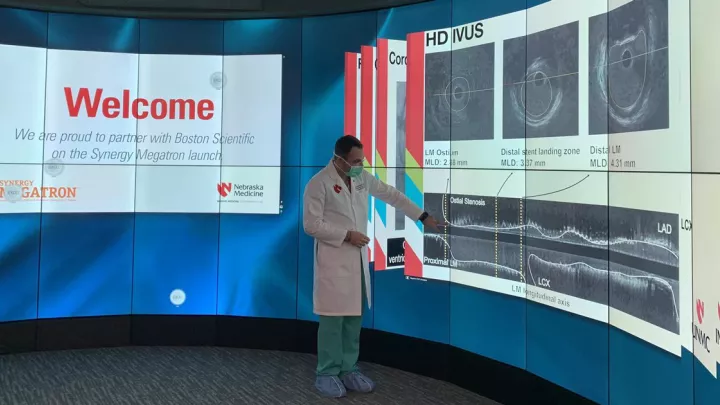What is peripheral arterial disease, and can it be reversed?

Peripheral arterial disease, or PAD, is a condition that affects the blood vessels outside of the heart and brain, commonly in the arms and legs.
“It is hardening of the arteries or calcification of the arteries in a certain vascular territory,” explains vascular surgeon Amanda Kistler, MD. “People may be more familiar with coronary artery disease causing heart attacks – peripheral arterial disease is a similar situation, just in a different location in the body.”
PAD is a chronic and progressive disease that cannot be reversed. Still, it can be effectively treated to manage symptoms and slow down its progression.
PAD risk factors
Risk factors for PAD share many similarities to those for cardiovascular disease. These include:
- High blood pressure: This condition puts extra strain on the arteries and increases the risk of plaque buildup.
- High cholesterol: Elevated cholesterol levels contribute to plaque formation in the arteries.
- Diabetes: High blood sugar levels can damage the blood vessels and nerves, increasing the risk of PAD.
- Smoking: Smoking not only increases the risk of developing PAD but also accelerates its progression.
“All of the things that your primary care physician might recommend to you for overall health maintenance, we are going to talk to you about when it comes to risk factor modification,” Dr. Kistler says.
Symptoms and stages of PAD
PAD progresses through four stages that include the following symptoms:
- Claudication: Cramp-like pain or fatigue in the muscles during physical activity due to inadequate blood flow that resolves with rest.
- Ischemic rest pain: Continuous pain in the tip of the toes or top of the foot when a person is lying flat that resolves with dangling legs down or walking.
- Ulcers: Wounds that develop most commonly on the feet, initially, but may occur on the leg that have been present for at least six weeks.
- Gangrene: Tissue death with black discoloration.
Slowing down progression
To slow down the progression of PAD and manage symptoms, addressing the underlying risk factors is key. The following measures are recommended:
- Control high blood pressure through medication and lifestyle changes.
- Manage diabetes and maintain healthy blood sugar levels.
- Manage cholesterol levels with diet and sometimes medication.
- Quit smoking to reduce the risk of complications and further progression.
Dr. Kistler acknowledges implementing many of these lifestyle modifications can be challenging but stresses their importance in slowing the progression of PAD.
“If someone has been smoking for 40 years, it’s not easy to quit, but keep in mind that the tradeoff may be amputation if one continues to smoke,” Dr. Kistler says. “I would recommend that, if they start having symptoms related to peripheral arterial disease, to be very aggressive about modifying the things they can.”
The Nebraska Medicine Smoking Cessation Program can help patients who are trying to quit using tobacco.
Long-term effects and treatment options
PAD worsens over time, especially if left untreated. Reduced blood flow can lead to chronic pain, difficulty walking and impaired quality of life. In severe cases, PAD can result in nonhealing wounds and infections, increasing the risk of amputation.
Treatment options for PAD include:
- Endovascular interventions: A minimally invasive approach in which wires, balloons, stents and other devices can be used to open or widen narrowed or occluded blood vessels.
- Bypass surgery: Redirecting blood flow around the blocked artery through surgical intervention.
“It is important to keep in mind that not all patients or blockages can be managed minimally invasively and may require a surgery,” Dr. Kistler says. “The ultimate goal is to create a durable solution.”
Early detection and appropriate medical interventions play an essential role in managing PAD and its long-term effects.






